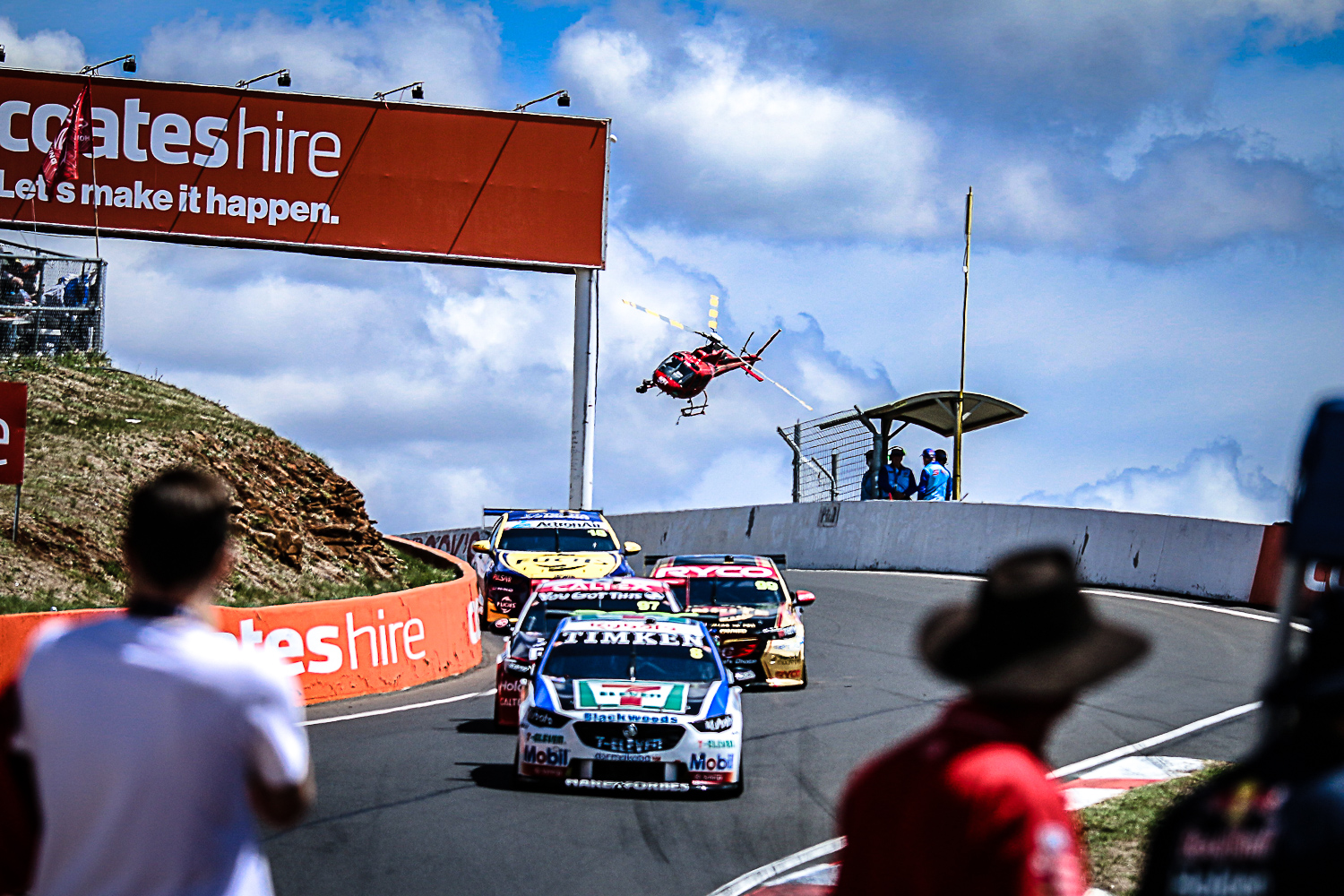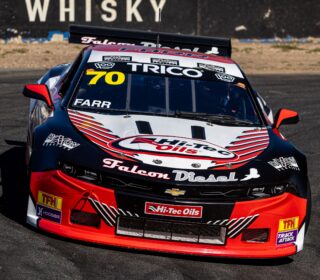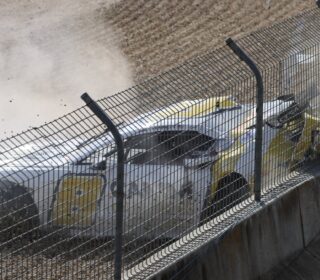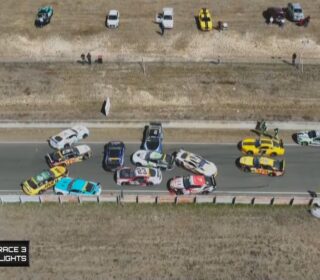INSIGHT: HOW THE BATHURST TV AUDIENCE HAS EVOLVED

A DEEP-DIVE into the TV numbers behind this year’s Bathurst 1000 shows that despite the split Pay / Free TV deal potentially hindering the fans across the broader season, it’s not hurt the Bathurst classic. At all.
WORDS: Richard Craill IMAGES: Mark Walker
BATHURST has to be considered as one of the biggest days on the Australian Sporting calendar – both in the psyche of fans and in TV audiences around Australia.
While larger audiences watch the Melbourne Cup, AFL and NRL Grand Finals and State of Origin, none of them do it for such a sustained duration over the course of one day – or, in the case of the Great Race – four of them.
We’ve dug into the numbers from 2019 and the last decade to see how the current TV deal has changed the viewing habits of Bathurst audiences and what it could mean for the future.
You can read more about the broader 2019 Supercars Championship ratings by clicking here.
TOTAL AUDIENCE
THE Great Race has enjoyed a remarkably consistent run on TV across the last decade, especially compared to the AFL and NRL Grand Finals.
While TV ratings for the respective codes’ Grand Finals swing drastically depending on the teams playing and the states from where they hail (the AFL Grand Final will traditionally spike significantly in New South Wales, for example, if the Sydney Swans are involved), Bathurst remains a truly national spectacle watched by a similar audience each year.
Over the last decade, an average audience of 1.23 Million has watched the race itself, based on the metro audiences released by ratings agency, OzTam.
This is a remarkably consistent audience that backs up the race’s status as a true national event.
The most watched race in that period was 2016 – seen by 1.339 million – and the lowest 2010, seen by 1.038 million.
The 2019 edition was seen by 1.287 million across the five capital cities on 10 and Fox, the third most-watched of the last decade.
The average audience of the Top 10 Shootout across the same period is 769,000; 7 of the 10 years generating an audience between 700-800,000 people.
AVERAGE TV AUDIENCES: Bathurst 1000
5 City Metro / 5 City Metro + FOX Sports numbers for ‘race’ period of telecast.
| YEAR | RACE | SHOOTOUT |
| 2009 | 1,240,000 | 761,000 |
| 2010 | 1,038,000 | 579,000 |
| 2011 | 1,212,000 | 718,000 |
| 2012 | 1,253,000 | 935,000 |
| 2013 | 1,263,000 | 764,000 |
| 2014 | 1,224,000 | 848,000 |
| 2015 | 1,339,000 | 774,000 |
| 2016 | 1,339,000 | 733,000 |
| 2017 | 1,311,000 | 772,000 |
| 2018 | 1,132,000 | 795,000 |
| 2019 | 1,287,000 | 775,000 |
FREE TO AIR
THE last four years of the Channel 7 era each delivered nearly identical ratings for the race itself – each one drawing between 1.21 and 1.26 million people.
The shift to the 10 / Fox deal in 2015 saw the total audience actually increase to 1.339 million, however Channel 10’s share of that was only 1.095 million; the lowest the race had drawn on free-to-air for some time.
Since then, Channel 10’s share of the audience has shrunk to as low as 745,000 in 2018 – a race that was the fastest on record, finished early and therefore failed to deliver the prime-time spike TV networks crave when events like this push beyond 6PM.
The 2019 race saw a 6 per cent rise to 818,000 on Channel 10 for which they will no doubt be pleased.
Overall, however, the drop in free-to-air ratings reflects the shrinking free-to-air market rather than a lack of interest in the race itself; as the next chapter will show.
FREE-TO-AIR AUDIENCES
5 City Metro figures for ‘Race’ segment of telecast
| YEAR | RACE | SHOOTOUT |
| 2009 (7) | 1,240,000 | 761,000 |
| 2010 (7) | 1,038,000 | 579,000 |
| 2011 (7) | 1,212,000 | 718,000 |
| 2012 (7) | 1,253,000 | 935,000 |
| 2013 (7) | 1,263,000 | 764,000 |
| 2014 (7) | 1,224,000 | 848,000 |
| 2015 (10) | 1,095,000 | 627,000 |
| 2016 (10) | 997,000 | 551,000 |
| 2017 (10) | 849,000 | 510,000 |
| 2018 (10) | 745,000 | 499,000 |
| 2019 (10) | 818,000 | 461,000 |
FOX SPORTS
THE CONTROVERSIAL TV deal introduced in 2015 was a windfall for the sport but split the audiences between Pay and Free-to-Air TV – however for Bathurst it has not hurt the overall audiences even slightly.
It is suspected that while 10 retains the casual, once a year audience who will watch the race because it’s Bathurst and its what you do, the hardcore fans have migrated to FOX Sports where they can get the coverage in HD and without the interruption of commercial breaks.
So while the free-to-air audience has dropped, the Pay TV audience has grown to fill the void to the point where the total number remains identical.
FOX Sports’ audience for their first race was 244,000, which represented 18% of the overall race audience.
That climbed significantly to 344,000 in 2016 (26% of the total audience) and then again by another 100,000 a year later to 462,000, a whopping 35% of the total audience watching the race.
The softer 2018 Audience – remember, the early finish hurt – still saw 34% of the audience watching on FOX and this year it climbed further to 469,000; 36% of the race audience watching on subscription TV.
AUDIENCE % WATCHING ON SUBSCRIPTION TV
% Share of audience viewing either the race or shootout on FOX Sports
| YEAR | RACE | SHOOTOUT |
| 2009 | 0% | 0% |
| 2010 | 0% | 0% |
| 2011 | 0% | 0% |
| 2012 | 0% | 0% |
| 2013 | 0% | 0% |
| 2014 | 0% | 0% |
| 2015 | 18% | 19% |
| 2016 | 26% | 29% |
| 2017 | 35% | 30% |
| 2018 | 34% | 37% |
| 2019 | 36% | 41% |
The percentage of the audience watching on Pay TV will be most pleasing to Foxtel head-honcho’s, and the fact that continues to grow, while the total audience remains the same, only adds value to their substantial contribution to Supercars’ TV rights deal and will unquestionably make those in North Sydney happy, too.
Interestingly, the earlier in the weekend you go the higher FOX Sports share becomes.
This year, of the 775,000 who saw the Top 10 Shootout 314,000 or 41% saw it on the subscription service.
Qualifying on Friday this year was seen by a total metro audience of 290,000 of which 49% were via FOX.
This indicates that the hard-core fans are watching the key moments of the weekend, while the more casual audiences jump in on Sunday only.
SUBSCRIPTION TV AUDIENCES
Bathurst 1000 Race broadcast / Shootout on FOX Sports
| YEAR | RACE | SHOOTOUT |
| 2009 | NA | NA |
| 2010 | NA | NA |
| 2011 | NA | NA |
| 2012 | NA | NA |
| 2013 | NA | NA |
| 2014 | NA | NA |
| 2015 | 244,000 | 147,000 |
| 2016 | 342,000 | 221,000 |
| 2017 | 462,000 | 223,000 |
| 2018 | 387,000 | 296,000 |
| 2019 | 469,000 | 314,000 |
WHAT DOES IT MEAN?
WHILE there is an argument to be made that the shift to a split subscription / free-to-air model has hurt broader audiences across the full championship season, it is impossible to argue that is has hurt the Great Race.
At a time when a majority of sports rights properties are expected to reduce, if not increase, there will be significant positivity within Supercars HQ and Foxtel that the audience share of their coverage has grown so much – from 19% to 36% – over the duration of the deal.
This means the hard-core fans are spending their money on Foxtel subscriptions which is the whole idea.
And before people shoot down the idea of Pay TV, remember that Foxtel are Supercars single largest revenue contributor: think of them a major sponsor who needs to know that they’re getting return on investment.
It won’t go unnoticed that 506, the “Bathurst Channel” averaged more than 190,000 for 24 hours of ratings period on Sunday, making it the most watched channel in a single day in the history of the network – sports or otherwise. That is significant.
Similarly, that the 2019 race was the 17th most-watched thing in the history of Australian STV, and that it is a list that includes the final few seasons of Game of Thrones, will be of massive significance too.
At the same time, the free-to-air coverage on Channel 10 has reduced as die-hard fans switch to Fox Sports to get their coverage in better quality and without adverts.
And yet, it remains the largest sporting property – at least before they air the Melbourne Cup this year – on the network and broadly, one of their highest rated weekends of the year.
As well as increasing their audience this year, the Great Race lead in also saw the network’s light news program The Project deliver its biggest audience of the year. It’s stats like that why TV networks buy marquee sport; to help draw attention to their other slate of programming.
Here’s another point that will be seen as a positive thing.
Ten have recently secured the Melbourne Cup (and associated lead-in and carnival events) rights for five years at $20m per year. The horse race was seen by a metro audience of 1.83 million last year on Channel 7 (there was no Subscription TV simulcast) which rose to 2.7 million when including regional audiences.
The value of Bathurst can been reflected here: At the end more than 2.35 million were watching on 10 (900k plus), regionally (700k plus) and on FOX (500k).
Not a massive amount less than the ‘race that stops a nation’, is it? If the November Horse Race is worth $20m a year, then even Bathurst as a stand-alone item will continue to be seen as a highly valuable addition to any free-to-air TV network’s slate for a long time to come. The strength of Bathurst’s ratings will then spur on the remainder of the next free-to-air deal, with whomever that is, moving forward.
Bathurst will always be the cornerstone on which Supercars TV deal is based and the 2019 numbers will surely make the series’ hopes of an even better deal – on both free-to-air and Pay TV – even better than ever.







